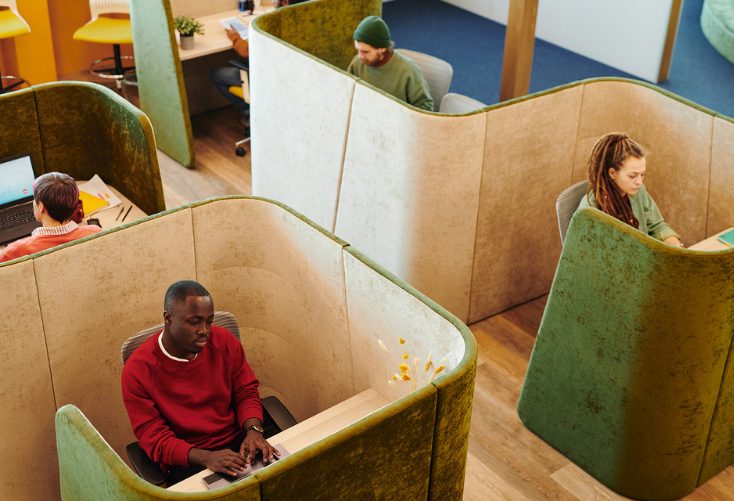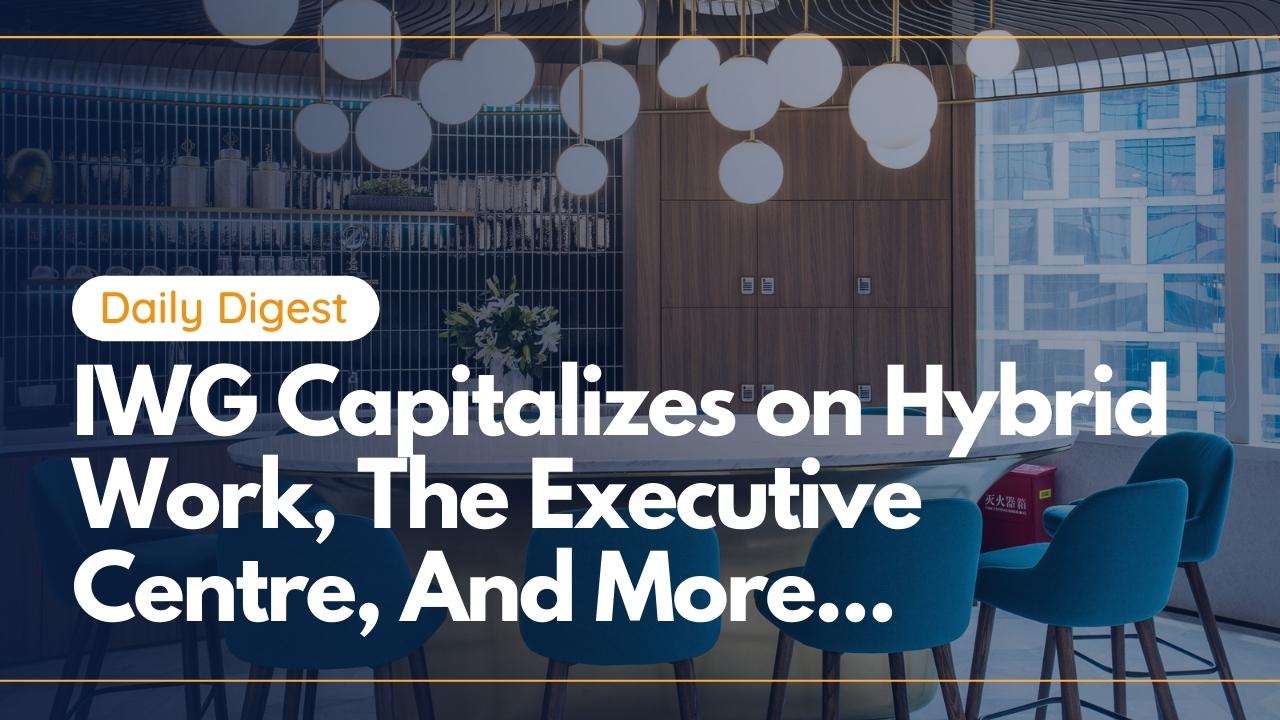Hand selected flexible workspace news from the most reliable sources to keep you ahead of the pack. We find all the latest news, so you don’t have to. Morning and afternoon updates. Stay in the know.
Here’s what you need to know today:
- The Wing Attempts To Face Its Troubling Past
- Google Adopts More Relaxed Work Arrangement Policy
- What Does A Remote First Culture Really Mean?
- Office Reconfiguration Costs Are Varied Across Regions
- The Real Benefits Of Workplace Wellness Programs
- Workplace Wellbeing Is Still Not A Cultural Priority
The Wing Attempts To Face Its Troubling Past
This week, female-oriented flex space operator The Wing announced it would be reopening one of its Manhattan locations next week.
Soon after the announcement was made on Instagram, issues of toxicity within the company began to flood the comment section. The company addressed these concerns with a note stating, “We see the concerns being raised” and directed people to a page on its website titled “Moving Forward.”
The page seemed to address the backlash by stating that the company was taking “steps to accelerate our efforts to support a diverse, inclusive and equitable culture at The Wing.”
As part of this effort, The Wing revealed it was bringing on Sheila Lirio Marcelo, former CEO of Care.com, as its executive chair, as well as appointing an advisory board to help with DEI efforts.
Last year, the company faced major criticism over its lack of inclusivity for all women and nonbinary people. This included accusations of racist and discriminatory behavior within the workplace. Months after, CEO Audrey Gelman stepped down and the firm has been trying to remedy its image ever since.
With news that The Wing is reopening, former staffers that formed the Flew the Coup collective commented that the company needs to take formal responsibility for the damage they caused its former staffers, especially the workers of color.
The Flew the Coup organization has requested an apology from cofounder Lauren Kassan, who is now CEO, and to be released from their non-disclosure agreements.
Google Adopts More Relaxed Work Arrangement Policy
Google has revealed that it now anticipates 20% of its staff will continue working from home after its offices reopen this year.
Prior to this announcement, Google had taken a more strict approach to the return to work. However, it appears that it is now relaxing its policies.
Google anticipates that 60% of its employees will be on site a few days each week, 20% will work in new office locations and 20% will work from home.
In December the company announced a plan to have workers spend three days a week in the office.
“Before the pandemic, we had thousands of people working in locations separate from their core teams,” Sundar Pichai, CEO of Google, wrote in an email to employees. “I fully expect those numbers to increase in the coming months as we develop more remote roles, including fully all-remote sub teams.”
At the moment, any Google employee can temporarily work for four weeks each year from a location other than their assigned office. Pichai added this will vary depending on each worker’s roles.
What Does A Remote First Culture Really Mean?
Remote first culture has been a big selling point for companies trying to attract new talent. While notable companies like Twitter are committing to a remote workforce, the issue with this description is that adopting a remote work policy is not culture in itself.
While there is no one true definition of company culture, in vague terms, it’s whatever guidelines create a well-functioning, healthy workforce. This can range from attitudes and behaviors, to policies that encourage responsibility and creativity.
Because culture is so difficult to define, companies often lean towards tangible amenities in order to provide proof of a healthy workplace. This will usually include office perks, amenities and services that leaders believe solidifies their culture.
Although these amenities are nice on the surface, one study found that 60% of office workers find these types of perks distracting.
So how do companies go beyond tangible goods and remote working policies to truly nurture a healthy company culture?
Building a culture starts with a clear statement of values. This should include three pillars: employee price, customer success and revenue and profitability. From there, all team members can work together to accomplish common goals.
These values need to be reinforced throughout whatever processes and operations your company adopts. For instance, employee pride can be highlighted by having weekly “good news” check-ins that creates a sense of optimism and creativity, which encourages employees to continue working hard.

Office Reconfiguration Costs Are Varied Across Regions
A new survey from JLL shows that the cost of tenant fit outs will vary as workers return to the office and companies demand new office configurations.
The survey found that the average regional costs per square foot ranged from $216.67 in California to $169.20 in the South.
Metro areas like Atlanta, Dallas, Houston, Nashville, Orlando, Phoenix and Tampa saw the most affordable fit out costs, while New York and San Francisco continued to rank the most costly.
While there is no one-size-fits-all solution to office space planning, flexibility remains the overall theme of the market. In fact, research from JLL found that 72% of respondents want to continue working from home in some capacity in the future.
“Employers must reimagine the dynamic between the physical and virtual workplace to meet employees’ demands,” said Laura Beebe, JLL’s COO of project and development services for the Americas. “While work-from-home won’t be the solution for satisfying all working needs and work styles, hybrid work will be the answer to providing greater employee workplace choice.”
Because of this, the office space must be outfitted to become an environment that focuses on collaboration, physical and mental health, as well as career development. On the other hand, home-working can be more designated for concentrated, individual tasks.

The Real Benefits Of Workplace Wellness Programs
The prioritization of health in the workplace started long before the pandemic hit, but the health crisis has revitalized these efforts as companies prepare to adopt new work policies.
Implementing wellness programs are no longer nice-to-have perks — they are a necessity to thrive in the future of work. This should involve rethinking office design, workplace arrangements and other policies that guarantee the employee experience and work environment are nurtured.
However, some companies are still skeptical of having a wellness program despite research proving the numerous benefits.
For instance, a study from WellSteps, which includes statistics from a Rand Report, shows there are seven major benefits to wellness programs, including: enhancing employee behavior, reducing elevated health risks, reducing healthcare costs, boosting productivity, improving recruitment and retention and increasing employee morale.
“We find that workplace wellness programs can help contain the current epidemic of lifestyle-related diseases, the main driver of premature morbidity and mortality as well as healthcare cost in the United States,” said Soeren Mattke, lead author of the Rand Report.
These programs mean more than improving physical health, it means addressing the increased issues of mental health that have impacted the workforce over the past year or so.
Workplace Wellbeing Is Still Not A Cultural Priority
Koa Health’s new report titled “Wellbeing at Work” is highlighting the impact that the pandemic has had on the mental health of companies in the UK.
The social listening research conducted by Pulsar on behalf of Koa Health finds that online content about people’s declining mental wellbeing increased by 400% from February 2020 to May 2020.
The research also revealed that 56% of UK organizations saw an increase in demand for mental health services, leading HR managers to spend an average of 30% more of their time on this type of support for employees.
Despite the increased importance of mental wellbeing in the workplace, it is still not fully incorporated into business culture. In fact, 43% of companies stated that mental health was not a cultural priority.
“Supporting employees through the COVID-19 crisis is likely to prove the greatest challenge of many organisational leaders’ and HR managers’ careers,” said Dr. Oliver Harrison, CEO of Koa Health. “While our report found that many have risen to the challenge, it’s alarming that many organisations still do not see mental health as a cultural priority at their organisation, and that they plan to reduce investment in mental health support at such a critical time for UK employees as they consider returning to offices.”



 Dr. Gleb Tsipursky – The Office Whisperer
Dr. Gleb Tsipursky – The Office Whisperer Nirit Cohen – WorkFutures
Nirit Cohen – WorkFutures Angela Howard – Culture Expert
Angela Howard – Culture Expert Drew Jones – Design & Innovation
Drew Jones – Design & Innovation Jonathan Price – CRE & Flex Expert
Jonathan Price – CRE & Flex Expert














